Chinese polygons and test centers on Google Earth images
From the very moment of its formation, the PRC sought to possess nuclear weapons. Mao Zedong believed that as long as China does not have an atomic bomb, the whole world will treat China with disdain. In particular, he said: “In the current world, we cannot do without this thing, if we want it not to offend us”.
The leadership of the PRC several times directly appealed to Soviet leaders with a request to provide nuclear weapons. But this was denied, at the same time, the USSR provided tremendous assistance in the training of personnel for the PRC nuclear industry and in the supply of scientific and technological equipment. Documentation on issues of interest to Chinese specialists was also provided.
The events in Korea and the collisions in the Taiwan Strait, after which the United States voiced the threat of the use of nuclear weapons against China, only convinced the Chinese leadership that they were right.
The deterioration of Sino-Soviet relations in the early 60-s did not change Beijing’s motivation to possess nuclear weapons. By that time, Chinese science had already received a sufficient amount of theoretical information from the USSR, and significant progress was made in its own research.
October 16 1964, State Council Premier Zhou Enlai, on behalf of Mao, informed the Chinese people about the successful testing of the first Chinese nuclear bomb (596 project). Tests were held at the nuclear test site "Lobnor" (in the vicinity of the salty lake Lobnor). It was a “uranium charge” in 22 kilotons. Successful testing has made China the 5 nuclear power in the world.
The nuclear test 1964 of the year in the PRC was a surprise for the United States. American intelligence believed that China would not be able to quickly develop a bomb, since a significantly longer period is needed to improve plutonium technology without assuming that Uranium-235 would be used. Plutonium began to be applied from the eighth test.
Seven months later, the Chinese carried out a test of the first combat model of a nuclear weapon — an aerial bomb. Heavy bomber, H-4 (Tu-4), dropped 14 in May 1965, 35-kiloton uranium bomb, which exploded at an altitude of 500 m above the range.
17 June 1967 of the year, the Chinese carried out a successful thermonuclear bomb test, the test was carried out at the Lobnor test site. A thermonuclear bomb dropped from a H-6 (Tu-16) aircraft on a parachute exploded at an altitude of 2960 m, the power of the explosion was 3,3 megatons. After this test was completed, the People's Republic of China became the fourth thermonuclear power in the world after the USSR, the USA and Great Britain. Interestingly, the time gap between the creation of atomic and hydrogen weapons in China turned out to be less than in the USA, USSR, Great Britain and France.
Total on the Chinese landfill area 1100 square. km 47 nuclear tests were conducted. Of these: 23 atmospheric tests (three ground tests, 20 air tests) and 24 underground tests. In 1980, China conducted the last nuclear test in the atmosphere, all further tests were performed underground.
In 2007, the PRC government opened a base for tourists at the Lobnor test site, where the first tests of nuclear weapons were carried out. The radiation level currently in this area is slightly different from the background values.
The concrete-protected bunker, from which the tests were conducted, consists of eight rooms located at a depth of 9,3 m from the earth's surface. Tourists can visit all these rooms research laboratory, command center, diesel generator and communication rooms.
The base also opened a museum in which old telegraph and telephone sets, equipment, clothing and household items that previously belonged to employees of the base are displayed.
The first Chinese missile range (later the cosmodrome), where ballistic missile tests were conducted, became Jiuquan. It is located on the edge of the Badan-Jilin Desert in the lower reaches of the Heihe River in Gansu Province, named after the city of Jiuquan, located in 100 kilometers from the test site. The ground at the spaceport has an area of 2800 km².
Jiuquan space center is often called the Chinese Baikonur. This is the very first and until 1984 of the year the only rocket and space range of the country. It is the largest cosmodrome in China and the only one used in the national manned program. Also performs launches of military missiles. Since 1970-1996. 28 space launches were made from the Jiuquan cosmodrome, of which 23 was successful. Mainly, reconnaissance satellites and spacecraft for remote sensing of the Earth were launched into low orbits.
On the territory of the operating launch complex there are two launchers with towers and a common service tower. They provide launches of CZ-2 and CZ-4 launch vehicles.
In 1967, Mao Zedong decided to start developing his own manned space program. The first Chinese spacecraft "Shuguang-1" was supposed to send two astronauts into orbit as early as 1973. Especially for him in the Sichuan province, near the city of Xichang, the construction of a cosmodrome, also known as the “27 Base”, was started.
The launch site was chosen according to the principle of maximum distance from the Soviet border; moreover, the cosmodrome is located closer to the equator, which increases the load thrown into orbit.
With the start of the “Cultural Revolution”, the pace of work slowed down, and after 1972, the construction of the cosmodrome ceased altogether. Construction resumed a decade later, in 1984, the first launch complex was erected. Currently, there are two launch complexes and three launchers at the Sichan Cosmodrome.
Over the years of its existence, the Sichan Cosmodrome has already successfully completed over 50 launches of Chinese and foreign satellites.
The Taiyuan Cosmodrome is located in the northern province of Shanxi, near the city of Taiyuan. Valid from 1988 year. The area of its territory is 375 square. km It is designed to launch spacecraft into polar and solar synchronous orbits.
From this cosmodrome, remote-sensing spacecraft, as well as meteorological and reconnaissance spacecraft are being put into orbit. The launch site, a launcher, a maintenance tower and two liquid fuel storages are located.
Not far from the Jiuquan Cosmodrome there is a platform for testing short-range ballistic missiles and anti-aircraft missile systems. Another large air defense ground is located on the shores of the Bohai Gulf.
At present, active work is being carried out in the PRC to develop anti-missile weapons. The first such system of national production capable of intercepting combat units of tactical missiles at flight altitudes up to 20 km was the HQ-9А SAM system, created in the PRC using technical solutions and design features of the Russian C-300PMU-2 complex.
In parallel, other missile defense systems are being developed that can intercept ballistic targets in the middle segment of the trajectory. In the future, this will allow the People's Republic of China to create a layered missile defense system to protect not the objects, but the most important regions of the country.
The weak point that hinders the creation of a regional missile defense system in China is the weakness of the missile attack warning system (EWS). The People's Republic of China is working on the creation of over-the-horizon radars capable of detecting the flight of ballistic targets at a distance of up to 3 thousand km. Currently, several radar stations are undergoing tests or are working in test mode, but their number is still not enough to cover all areas potentially dangerous in terms of a missile attack.
The main Chinese rocket testing sites, and aviation weapons systems are located in the desert sparsely populated areas of China. In the Autonomous Region of Inner Mongolia, in the Gobi Desert, at the Dinsin military airdrome, according to foreign media, there is the PLA Air Force Combat Use Center.
In the Chinese Air Forces, the United States Air Force created the Aggressor unit to simulate a potential enemy. The armament of this unit consists of Su-27 fighters.
Pilots from other PLA Air Force units regularly arrive on their combat airplanes on a rotational basis at the Dingxin airbase to conduct training air battles with the Aggressors and practice combat use at a land firing range.
Not far from the air base there is a ground test site where samples and models of military equipment, including foreign ones, are installed. Including there are models of hawk and Patriot.
A major aviation center where combat aircraft are manufactured is Xi'an. The PLA Air Force Test Center is also located here, where new types and modifications of combat aircraft are tested, including the deck J-15 and the 5 generation fighter J-20.
Tests of promising fighter J-20 are also conducted at the airport Changge. Where they are assembled, in addition to the prototypes of the 5 generation fighters, the J-10 fighters are manufactured in Changju.
China built a concrete model of an aircraft carrier to train pilots and personnel. A concrete ship with a superstructure, a landing strip and a catapult was erected far from the sea near the town of Wuhan. A concrete replica of the destroyer was built next to it.
The concrete "aircraft carrier" will allow the pilots of Chinese naval aviation to obtain the necessary skills, primarily in landing and taking off from this type of ships, and also provide the necessary practice to technical personnel.
In terms of the number of active and under construction missile and aviation test sites, test centers and launch sites of the PRC, at present, is not inferior to Russia. Quite significant resources are allocated for the construction of new and existing ones in China. This allows you to maintain an adequate level of combat training of troops, and test new samples of aviation and rocket technology.
http://scienceandglobalsecurity.org
http://www.iss-atom.ru
http://geimint.blogspot.com
Satellite images courtesy of Google Earth.

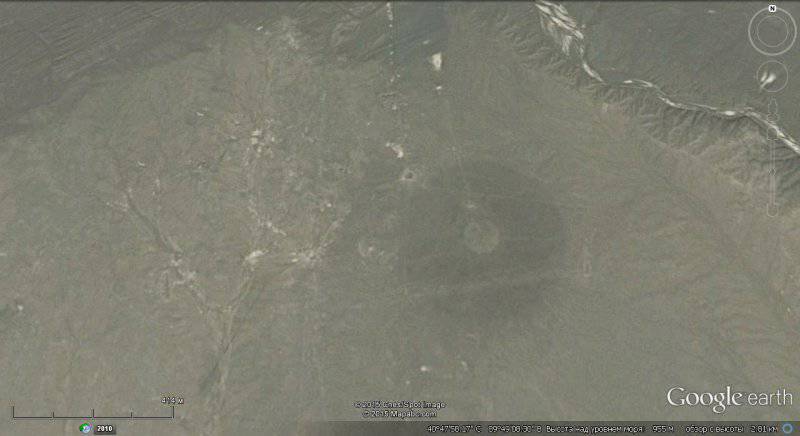
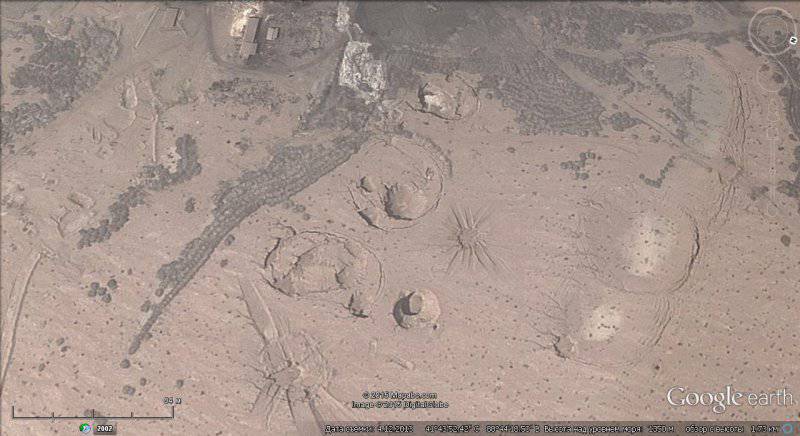
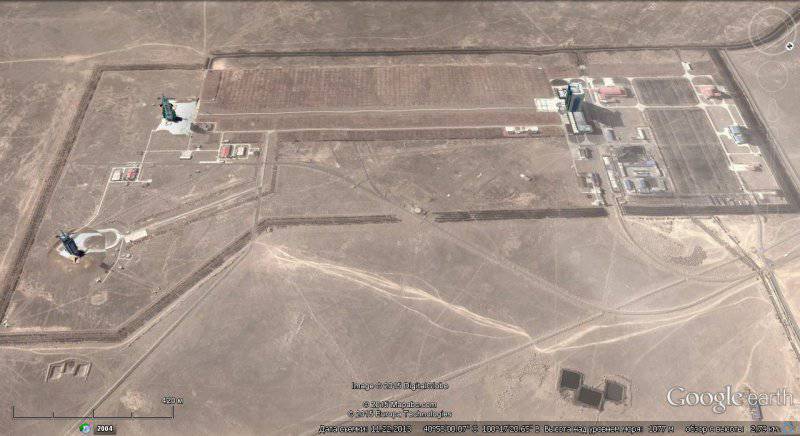
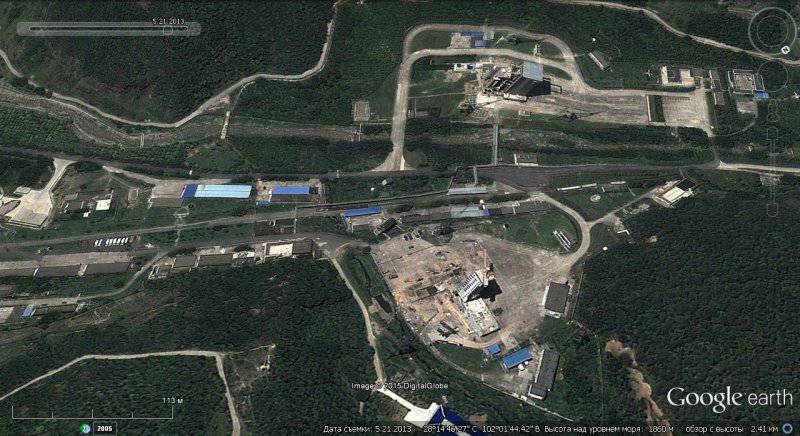
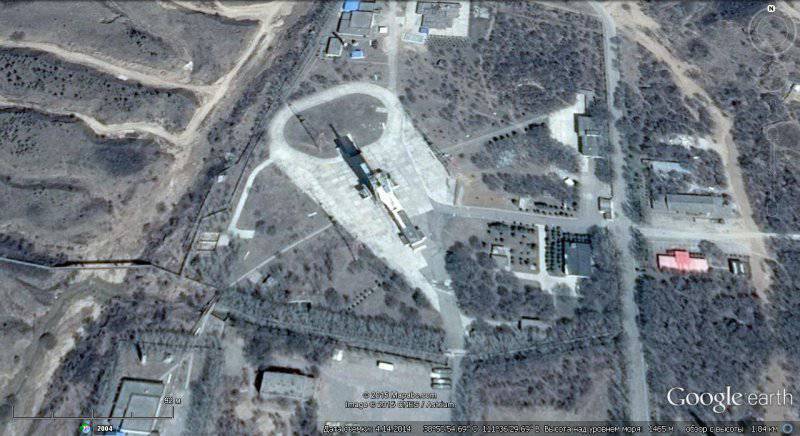
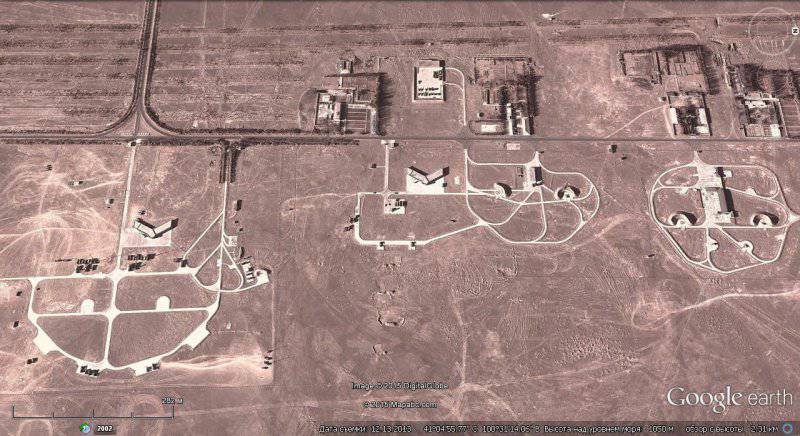
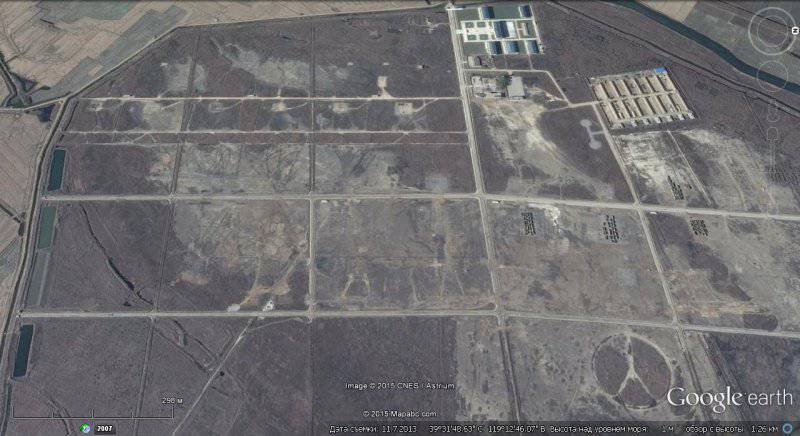


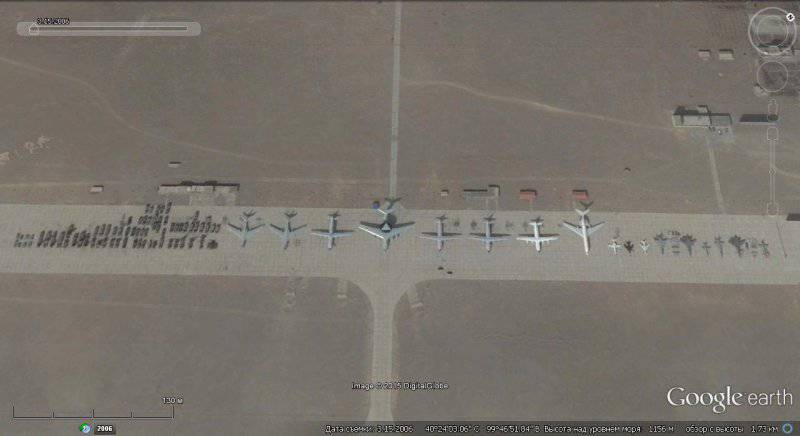
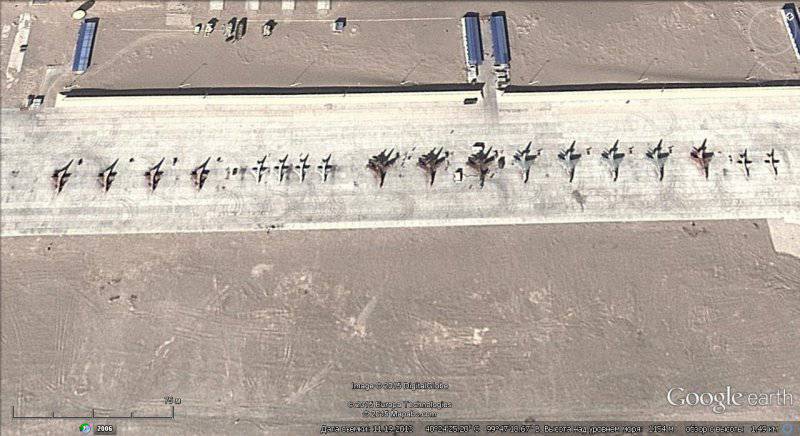
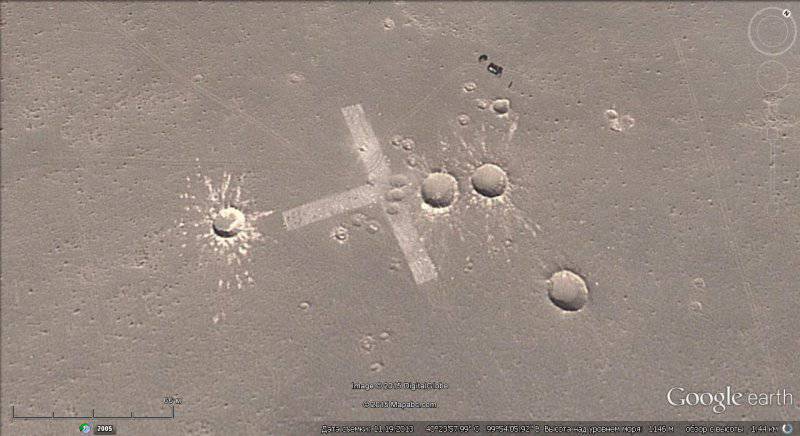
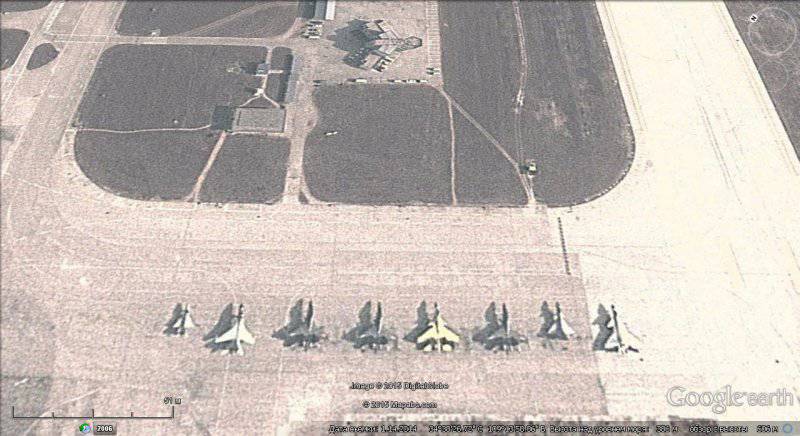
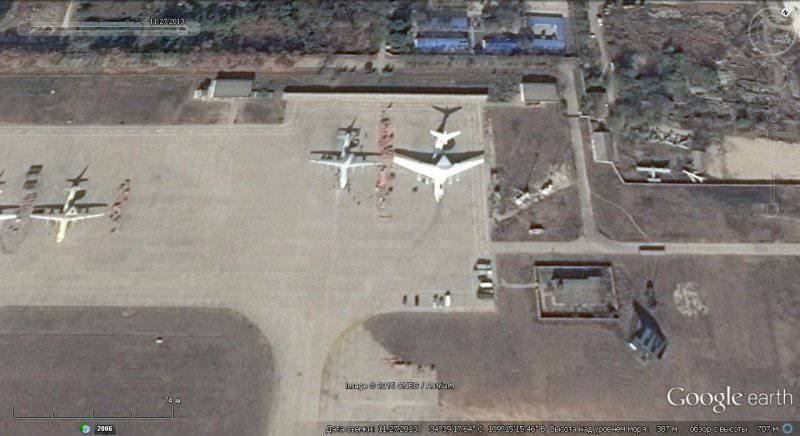
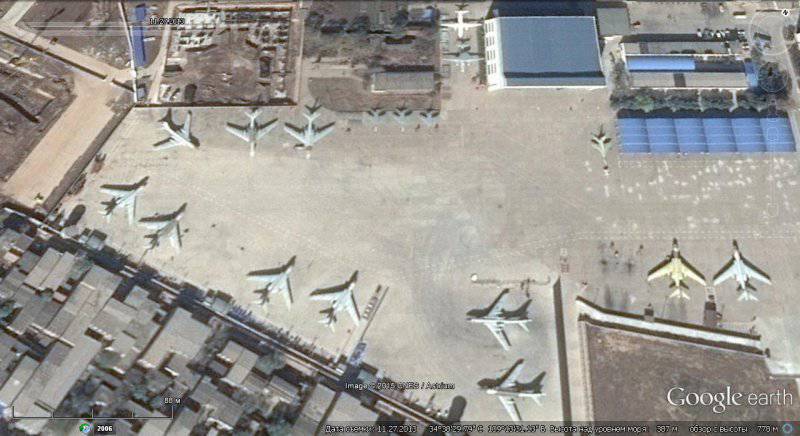
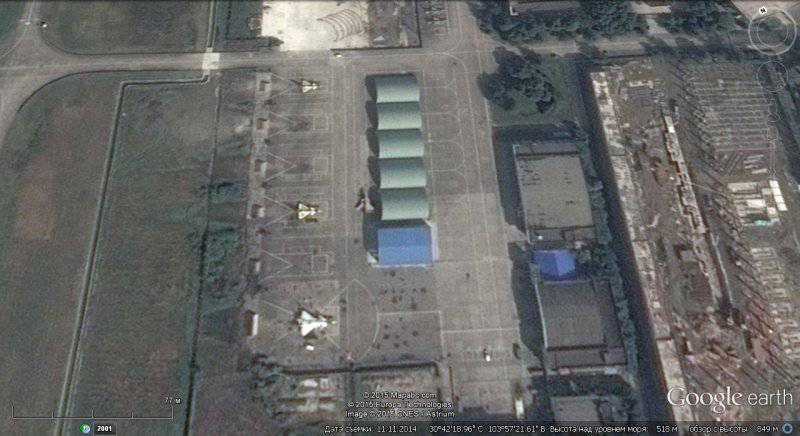
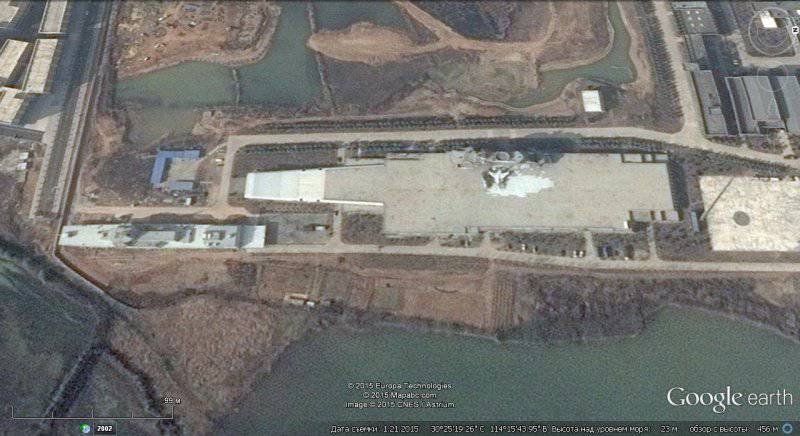
Information